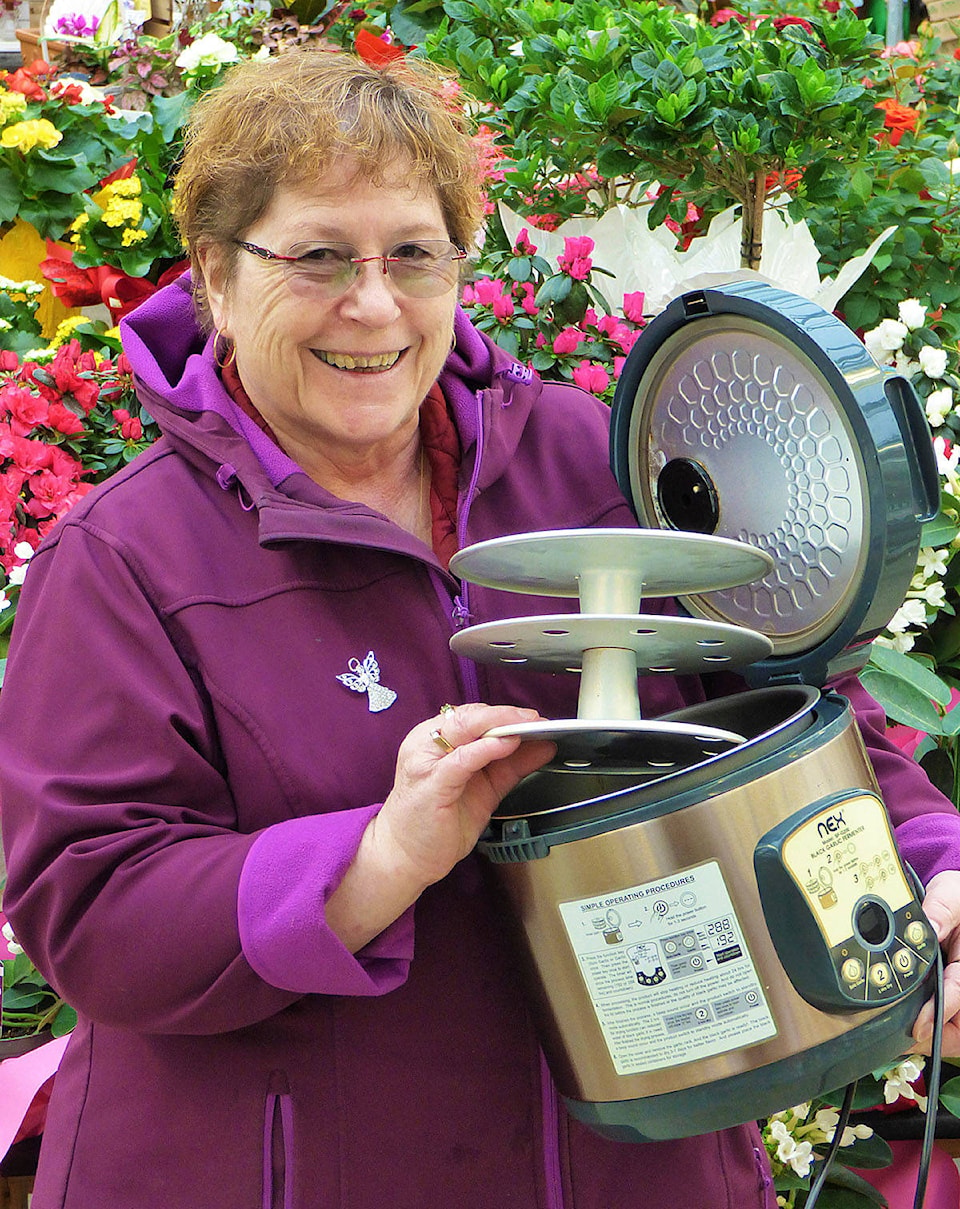It all began last fall with several calls to the nursery from potential customers, all of them looking for ‘black garlic.’
Now we sell a lot of different garlic cultivars – from ‘Red Russian’ to ‘Spanish Roja’ and ‘Mexican Purple’ – but no varieties with black in the name.
And since there are literally hundreds of types of garlic available, I thought we should check with our supplier, just to be sure we weren’t potentially overlooking a new introduction.
Unfortunately, he, too, was in the dark about this mysterious black garlic. Then one of the staff did a Google ‘check’ on her phone and we found out that black garlic was a process rather than a specific variety.
So when regular customers Barbara and Wolfgang Schoenbach dropped by, we inquired with them and found out all about this healthy supplement, which is enjoying a bit of a cult status right now.
The Schoenbachs are Pitt Meadows residents and having toured their garden, I can tell you it is focused on growing their own food. From espalier peaches that adorn the front porch to the new self-fertile kiwis, Wolfgang is always looking for ways to fit edibles into the landscape.
Garlic is also an important crop for them, particularly the spicier ‘Russian Red’ or ‘German Hardneck’ types, but the black garlic is Barbara’s handiwork – as Wolfgang won’t touch the stuff.
I’ll admit that it isn’t very appetizing to look at, as the glossy jet black cloves are peeled out of brown skin, and I was a bit hesitant to taste it in person, but was nonetheless pleasantly surprised.
There is only a mild roast garlic flavour, rather sweet with caramelized undertones of black licorice and a hint of Worcestershire sauce – although others taste balsamic vinegar and tamarind.
I suspect that my subconscious was persuaded by the blackness of this food towards the flavours of other dark edibles that I was familiar with. In any case, it was quite good, and after a moment’s contemplation, I was thinking that this would be great warmed up with a little fresh goat cheese on a Triscuit cracker, but that’s me.
The texture is soft and creamy, rather than gelatinous or chewy, so I don’t think that will throw too many people off trying it.
But for Barbara, this is a health supplement, one that is rich in amino acids, antioxidants and potassium. It is also a good diuretic. She eats six cloves in the morning (on an empty stomach) and the same at night, although some people experience insomnia from the invigorating effects of the black garlic – so the evening dose might not work for everyone.
Barbara makes her own using a Nex Black Garlic Fermenter, a device resembling a crock pot, which holds 16 whole bulbs in two racks – being careful to start with plump, unblemished specimens with no signs of fungus.
These are heat processed for about five days, after which they need to cure. They can be prepared over longer periods, but you risk burning it, which produces a bitter flavour.
The heat treatment really isn’t a true fermentation involving microbes; it simply breaks down the enzymes that give garlic its flavour and changes them.
The result is a healthier product with a good shelf life, lasting up to six months when sealed and refrigerated.
Barbara likes to peel her bulbs and store the cloves in small canning jars for ease of use.
So there you have it, the mystery of the black garlic has finally been solved.
Mike Lascelle is a local nursery manager and gardening author (hebe_acer@hotmail.com).
